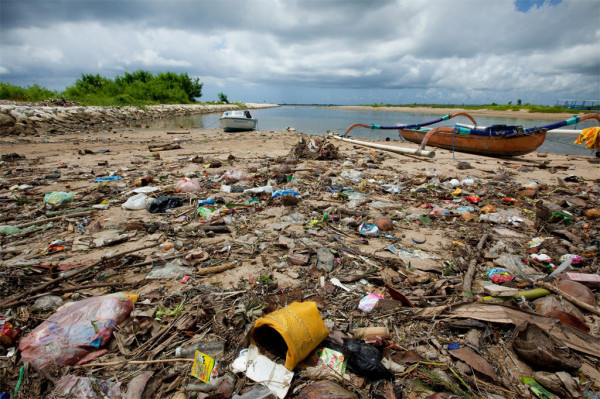The steady build-up of garbage in the world’s oceans is a “tremendous challenge” and a growing threat to the planet’s marine ecosystems with the potential for “significant socio-economic consequences,” the United Nations Environment Programme (UNEP) on 1 October 2014 heard.
In the final day of the 16th Global Meeting of the Regional Seas Conventions and Action Plans, held in Athens, Greece, scientists, policymakers and delegates gathered amid growing global concern over the accumulation of plastic waste in oceans and seas – a problem that could pose an estimated $13 billion in damage to marine life and habitats, and which demands a comprehensive remedy.
Addressing the meeting, Jacqueline Alder, Coordinator of UNEP’s Freshwater and Marine Ecosystem Branch, applauded the creation of a “visioning roadmap” seeking to chart a way forward for oceans governance in the coming decade, particularly in the areas of extraction, governance, impacts of a changing climate, ocean acidification, and pollution.
“Making change related to ocean governance or management, especially where the issues are transboundary, takes many years,” stated Alder.
“Having the roadmap will keep all of us here, and those that follow us, focused on the outcomes we need to achieve in the coming decades.”
Plastic bottles and garbage waste from a village in Timor-Leste wash on the shores of a river and then spill into the sea. UN Photo/Martine Perret
The meeting generated broad agreement among experts and policymakers regarding the issue of microplastics – tiny pieces of plastic less than one millimetre in size – which, they said, deserved more attention in order to better grasp their physical and biological impact on the marine ecosystems they pollute.
In addition, they advised a three-tier approach tackling marine litter at the national, regional and municipal levels as municipalities tends to have responsibility for solid-waste management.
The UNEP meeting coincides with the opening of a marine pollution-themed artistic installation adorning the lobby of the UN Headquarters in New York and entitled “The Garbage Patch State.”
The artwork is the creation of Italian artist, Maria Cristina Finucci, and was inspired by the five garbage patches, or gyres, that have amassed in the world’s oceans as plastic waste and other jettisoned materials are carried by the currents.
The patches themselves now occupy a total of 15, 915, 933 square kilometers of ocean, threatening the marine environment and the plants and animals living within it. (*Source: UN Release).
‘Governments Spend $1.4 Billion Per Day to Destabilize Climate’
Politicians Promote Fossil Fuels with Half a Trillion Dollars a Year
Save The Planet? Just Eat Cars, Drink Fuel!
The Mediterranean Sea Is Sick, Very Sick
Rich Countries Damage Water, Do Little to Reduce Pollution
World Bank and Giant Corporations Allied to Privatize Water Worldwide











